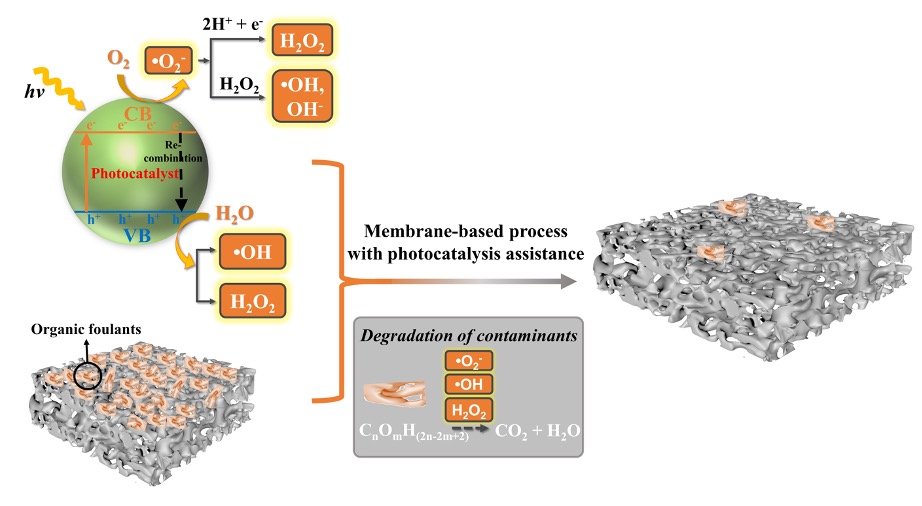Membrane-based separation is one of the most promising technologies in wastewater treatment, purification and refining of industrial products. However, membrane fouling can reduce membrane perm-selectivity, lower separation efficiency, and shorten membrane lifetime.
Photocatalysis is an appealing and sustainable approach for contaminant decomposition. It provides us with opportunities to integrate self-cleaning property into membrane operation.
Researchers from the Institute of Process Engineering (IPE) of the Chinese Academy of Sciences and Argonne National Laboratory (Argonne) in the U.S. summarized advances in photocatalytic materials and methods for water treatment, as well as photocatalytic alleviation of membrane fouling.
The study was published in ACS Applied Materials & Interfaces on March 18 (DOI:).
The researchers overviewed the latest strategies for photocatalytic activity improvement of various photocatalysts via enhancing visible-light response, promoting charge separation, and facilitating charge transport.
They focused on photocatalyst modification methods including noble metal loading, non-metal elements doping, and heterostructure construction, and emphasized on studies of photocatalysis-membrane system designing.
“In future research and development of photocatalytic membrane fouling control, efforts should be directed towards solving the issues of low quantum efficiency, poor (sun) light utilization, difficult photocatalyst loading and recovery,” said Prof. LUO Jianquan from IPE, the corresponding author of the study.
Designs UV- and reactive oxygen species-resistant membranes and new types of membrane modules that are either optically transparent or outfitted with internal light sources is crucial to integrate photocatalysis-membrane system for industrial application.

Schematic mechanism of photocatalytic degradation of contaminants and its application potential in membrane fouling control. (Image by ZHANG Huiru)
Media Contact:
LI Xiangyu
Public Information Officer
Institute of Process Engineering, Chinese Academy of Sciences, Beijing 100190, P. R. China.
E-mail: xiangyuli@ipe.ac.cn
Tel: 86-10-82544826
 Search
Search




 京公网安备110402500047号
京公网安备110402500047号